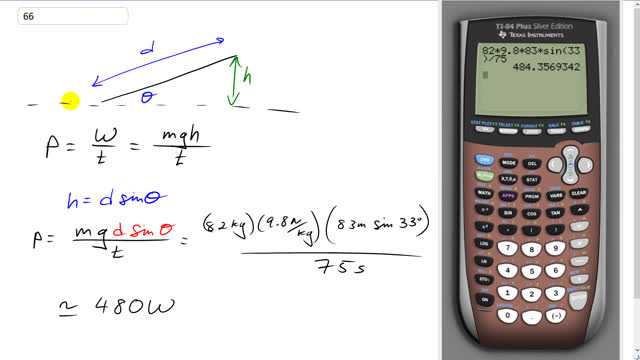
During a workout, football players ran up the stadium stairs in 75 s. The distance along the stairs is 83 m and they are inclined at a angle. If a player has a mass of 82 kg, estimate his average power output on the way up. Ignore friction and air resistance.

In order to watch this solution you need to have a subscription.
This is Giancoli Answers with Mr. Dychko. We need to assume that we are calculating the minimum power that the football players are exerting to go up the stairs, I mean, strictly speaking, it's not possible for us to know what the power output is because perhaps they are accelerating as they go up and maybe they are going faster by the time they get to the top versus at the bottom. But, we'll assume, they are just going at constant speed and finding the minimum power output. In which case, the work done to go from the bottom of the stairs to the top is gonna be equal to the weight of a football player multiplied by the change in height. In other words, this is the change in potential energy. Or, you can think of it in terms of forces, you could say well, here's a football player and there's a force down equal to gravity, and if we are talking about the case where they are going at constant speed upwards, then they are exerting some force upwards due to the football player and that's gonna be equal to the force of gravity so you could say, that's why, there is a mg here. And so the work done is gonna be that force multiplied by the distance over which it's applied, which is this vertical distance, because the force upwards has to be in the same direction as the displacement and so we are just taking the height upwards as well. So work is mgh divided by time; h is the opposite leg of this triangle and so we'll calculate it by using the hypotenuse d multiplied by sin theta and we'll substitute in, d sin theta for h and we will get our power output is 82 kilograms times 9.8 newtons per kilogram, that gives us the force times by 83 meters times sin 33 gives us the height divided by 75 seconds, which is about 480 watts.